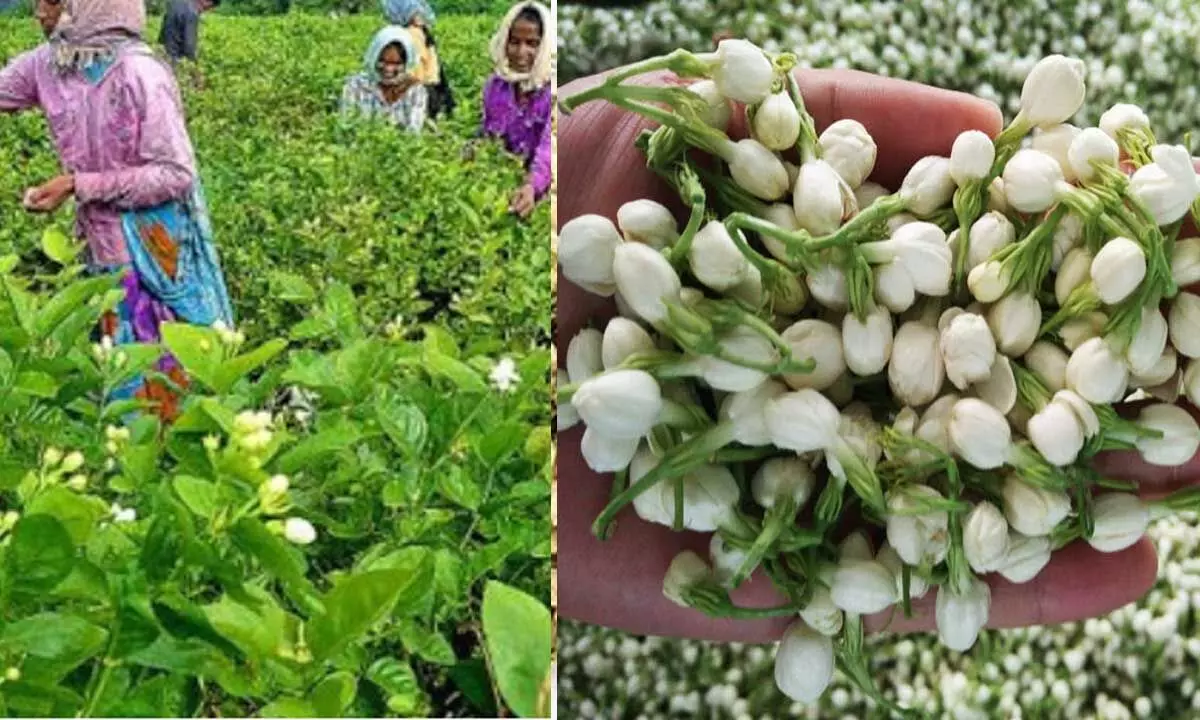Interested in flower business: Know how to start commercial jasmine farming business

Jasmine farming business
- Jasmine is a bushy shrub or it can also be climbing vine.
- This flowering plant is non-poisonous.
- Any individual interested in jasmine business can begin jasmine farming in two ways.
First option is the open field and another one is under the poly house condition. However, it has to be noted, poly house jasmine cultivation is a better proposition for quality flower production.
Here, you will be able to explore how to begin a small-scale jasmine cultivation business.
This flower has great commercial and market potential
Points to consider while undertaking jasmine farming business
-The first step should be, you must create a detailed financial planning, which includes input costs such as labor, seed, manure, irrigation and transportation
-The next significant point to consider, you must explore marketing avenues of selling jasmine flowers
-if you wish to exports the jasmine flowers, then you must get in touch with the authority as well as the flower growers association.
-you must ensure that, you arrange adequate irrigation during the summer season
Location and agro climatic condition for jasmine farming
First of all, you must grow jasmine in variety of climates as well as soils. Generally, it would be preferable for mild tropical climate for proper growth and flowering. Additionally, wild winters, warm summers, moderate rainfall and sunny days are ideal climatic requirements. Loamy garden soils are best suitable for the cultivation of all species and varieties. Additionally, a well distributed annual rainfall of about 800 to 1000 mm is best for growth as well as yield.
Jasmine farming basic steps
1. Land preparation and planting of jasmine
Firstly, you would be requiring one or two initial ploughing to remove the weeds present in the land. Additionally, you should dig the pits at size of 30 cm. you would require to use 10 kg farm yard manure to each pit before filling the pit. You can start planting in the month of June to November at a spacing to 1.5m to 1.5m.
2. Irrigation
Moderate watering is good for jasmine. However, you should apply the water twice a week if there is no rain. You should stop watering completely until pruning and fertilizer application. There is an interval of about a month between a one bloom and the commencement of the next.
3. Manuring
It is highly recommended that you should use 10 kg of farm yard manure and 60 g of Nitrogen and 120 g each of phosphorus and potassium to each plant. Again you must apply in two spilt doses, once after annual pruning and again during the month June -July
4. Pruning
Pruning helps the growth the of new healthy shoots. Also it influences the flower yield in Jasminum Grandiflorum. It is advisable to prune the plants the last week of November to get an increased yield and quality flowers.
5. Jasmine plant protection
Budworm, blossom midge and red spider and mites are the major pests of jasmine. Spraying of moncrotophos 36 WSC @2ml/ l is recommended to control the budworm and blossom midge. To control the red spider mite, you can spray sulfur (50% WP) @2g /l.
Diseases: Nematode as well as root rot are the major disease attacking the jasmine crop. Control measures for Nematode-10g of Temic Granules/plant near the root zone and for Root rot -Drench the soil around the plant with copper oxychloride @2.5g
6. Harvesting and storage of the jasmine
Jasmine begins to flower the second year onwards or sometimes even earlier. However, you can expect economic yield from the third year. It produces maximum flowers til 12/15 years.
You would require to harvest the flowers either in the evening or early in the morning when the buds are fully developed. In addition, you would require to handle the flowers with full care during the harvesting and transit. To increase the self-life of the flower you can soak the buds in the aluminum sulfate(0.1%) or silver nitrate (0.01%) solution for two hours. Then cover with a moist towel and keep under room temperature.
7. Export packaging of Jasmine flower
You can expect the best return and profits from exporting jasmine flowers. However, it requires special packaging technology for export transportation. Different nations maintain different technology for flowers. Major export markets are Dubai and USA. The flower require special treatment for increasing its shelf life and preservation.
A Substantial amount of jasmine flowers go to the market for fresh usage. You will be able to find numerous fresh flowers uses like making garlands and bouquets, decorating the hair of women, religious offering etc.
Additionally, there are several jasmine varieties that are beneficial for oil extraction. There is a potential number of users in the flavored tea industry. You would find a lot of flavored jasmine tea, herbal tea and black tea.
















